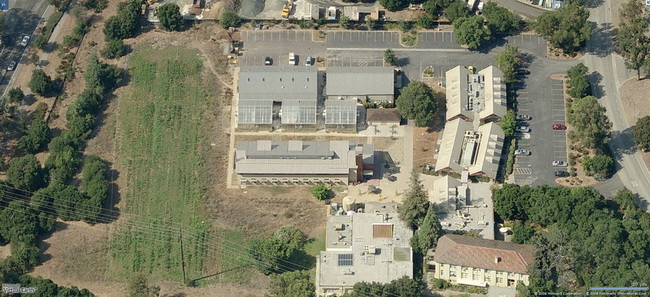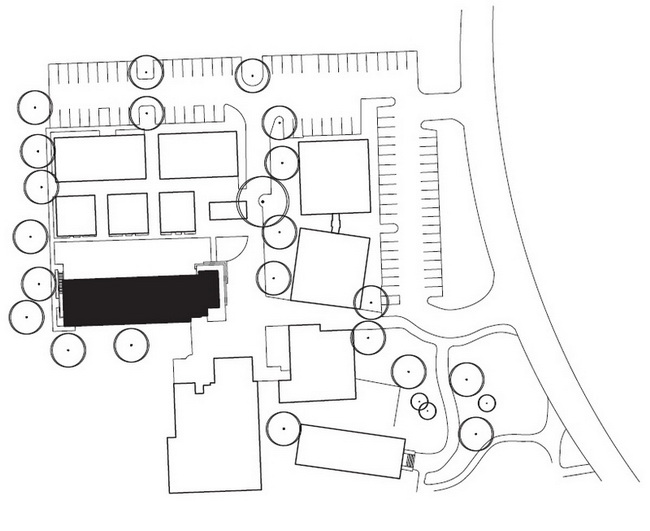|
| |
Carbon Neutral Case Studies |
Global Ecology Center, Stanford, California |
| Site Analysis / Site Design
|
Land Use & Community
This project provided an opportunity to transform what was once an uninviting public space into an active core for the Carnegie campus. The vertical cool tower doubles as an orientation device that announces the importance of this research center as it draws visitors into the new courtyard.
Two potential sites were left over after 70 years of piecemeal development serving the Department of Plant Biology. Rather than build on a mature oak woodland in the front of the site, the design team chose to redevelop the more difficult rear site that had served as a paved utility zone for decades. The new buildings were sited to form an open courtyard with existing laboratory buildings, enhancing circulation while maintaining open space used as an agricultural research zone and allowing for future expansion of the Department of Global Ecology. Old greenhouses were reused off site, site concrete was recycled, and irrigated turf was removed.
The courtyard paving extends to the street to invite walkers and bikers to the center, supporting Stanford’s pedestrian and bike-friendly culture. A bike parking area is located on the courtyard, and showers are available in an adjacent building. Approximately one-third of the building’s occupants (32%) use transit options other than single-occupancy vehicles on a regular basis. To accommodate the expected 45-person occupancy of the building, 17 parking spaces were added to a lot shared by the Department of Plant Biology and the Department of Global Ecology.
Source: High Performance Buildings Data Base

Site Plan showing Sun Path
Following passive solar heating principles, the result of recognizing the dominant heating requirements for the site, the building is oriented on the site to allow exposure to the south side of the building. The natural landscape features are situated on the sunny south side of the building, and the parking and other hard site requirements to the north side.

Aerial View from the South Side of the Property
This aerial view illustrates the dominance of the landscape requirements for the long southern exposure of the building.

Detailed Site Plan
This more detailed site plan indicates the position of the building, shown in black. The use of the long east west axis in the building layout, the cornerstone to passive solar heating design, is clearly evident. |

